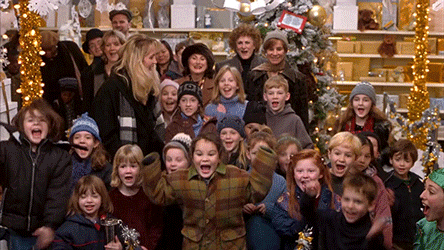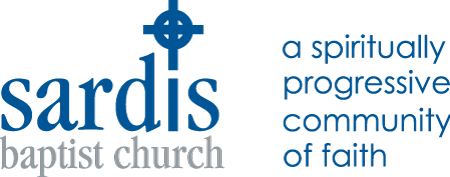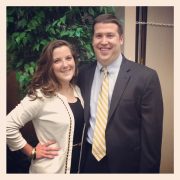Advent One: A Sunday of Hope

Advent One 2017 Hope and Egypt — Exodus 1 Joshua 1 Matthew 2 — 12-3-2017
Advent 2017
This year, we’ll explore three special places in the Bible: Egypt, Bethlehem, and Sardis. We’ll think about their significance to the larger story of Advent. And we’ll discuss what hope looked like in Egypt then and now; what peace looked like in Bethlehem then and now; and what love looked like at Sardis then and now. Each week, you’ll hear from different voices at Sardis.
Advent One: Egypt and Hope
December 3, 2017
Exodus 1:1-7
Joshua 1:1-9
Matthew 2:13-15; 19-23
Bob Stillerman and Jonathan Eidson
The Relevance of Egypt to Our Story:
It’s hard to imagine a Bible without Egypt. As a matter of fact, with the exception of Israel, Egypt is the most frequently named country in our scriptures.
A lot of this has to do with geography. Egypt is in the far northeast corner of Africa, and it practically borders Asia. So for starters, Egypt has connected the most populated, most fertile, most historic, most powerful continents since the dawn of time. I said practically. I want you to hold up your right hand, palm facing out, with your thumb pointing to the left. Imagine the arc between your index finger and thumb represents the southern and eastern borders of the Mediterranean Sea. Your thumb is the tip of Egypt. The metacarpal and first phalange of your index finger would be Canaan and Aram, and the tip of your index finger would be the land of the Hittites. And the space between the curve of your hand and your thumb’s metacarpal would be the Sinai Peninsula. And below that the Red Sea. So all that separates Egypt from the rest of the trading world and its major powers, is a little land bridge we know as Israel.
Therefore, when Egypt is mentioned in the Bible, it is nearly always either an origin or a destination. And Egypt is a two-sided coin. One day it’s a refuge, opening its wide arms in a protective embrace. Other days it’s a place of persecution, swallowing up the marginalized and subjecting them to the hard labors of despair.
Way back when Father Abraham was still a wanderer, he waded into Egypt for a bit. He found it to be a dangerous place, and the king said, “Please, don’t come back!” Joseph got there, too. But not of his own making: his brothers sold him into slavery. And they made it to Egypt as well. And not of their own making either: a famine forced them there. And even Jacob, the one we now call Israel, he made it to Egypt, at the request of his children. And when Herod shook his mighty fists, and sent his goons looking for would-be-infant-Messiahs, Joseph and Mary found themselves headed to Egypt as well.
In each of these instances, the journey was traumatic, but the ending was harmonious: vocational prosperity; food-a-plenty; mended-relationships; brothers reunited with brothers and daddies with sons; the birth of a people; the protection of a special child.
But Egypt’s got a dark side, too. Jacob’s clan grew too prosperous, and a new Pharaoh took notice. And after 400 years of persecution, Moses, with lots of help from God and from his friends, decided Egypt was better as an origin than a destination. But it’s not so easy to escape Egypt. It took forty years to be free of it the first time. And Egypt’s got a long memory. A thousand years later, another Pharaoh, this one called King Neco, came to settle accounts at Megiddo with Good King Josiah. It seems the global power still wished to extract its tax from the vassal state. And when Neco’s arrows pierced the king, the Babylonian exile was imminent. Yes, Egypt’s got a dark side, too.
But that’s why Egypt’s so important. This Advent season, we’re interested in learning how God works. And the stories tell us God is present in both the darkness and the light.
What Did Hope Look Like Back Then?
What did hope look like in Egypt back then? I suppose you could answer this in a number of ways. Some might focus on a destination – Hope in Egypt was a promised land and a promised freedom. I wouldn’t disagree. But that’s not how I’ll answer the question today. I think if you wanna know what hope looked like back then, you have to think about people, not places.
I see hope in Joseph. Abandoned. Enslaved. Framed. Imprisoned. Ostracized. Eventually redeemed. And restored. And reconnected. Imagine the resolve to believe that God would offer protection, and that God would put your gifts to use, even when things go from bad to worse to just plain awful.
I see hope in Reuben and his brothers. Imagine the shame and the guilt they carried all those years. And yet they came face to face with a God who offered restoration and healing.
I see hope in Jacob. An old fool – his relationships damaged with ten sons, his heart never-quite-mended at the loss of a spouse and another son, and his flailing to ensure he didn’t lose the twelfth son. Not to mention the shenanigans with his twin brother! And despite his flaws, God looked past his rough edges to make a people called Israel.
I see hope in Puah and Shiprah, and Miriam, and Jochebed, and Pharaoh’s daughter. Here were women who intuited the needs of their people, even before it was apparent. They knew they weren’t called just to protect Moses, they knew they were called to protect all life. And they did it despite the threat to their safety and welfare.
I see hope in Joshua. A young man when the Red Sea parted, he was seasoned with age when Israel finally crossed those Jordan waters. And I imagine him glancing back, one last look at Egypt’s border behind him, a panoramic of wilderness – that is a snapshot of children wandering. And then a glance ahead – this time, a people ready to grow up and grow into God’s plans for them. “Be strong and courageous, do not be frightened or dismayed,” God says. “For I was with you on that side of the river, and I will be with you wherever you may go!”
And I see hope in a young couple, trying to find sanctuary for their special child. Sure, the trip to Egypt will be perilous, but so too their son’s trip from infancy to adolescence to adulthood. Mary and Joseph’s flight to Egypt represents their commitment to nurturing God’ hope for the long haul.
What did hope look like back then? Hope looked like God’s people thrust into the inertia of Egypt’s gravitational pull, its effects both soothing and disturbing. But be it destination or origin, Egypt revealed a God invested in a people called Israel. And a people who believed that God’s investment mattered. And when we remember that God is invested in us, we’ve got hope, no matter what side of the Jordan we find ourselves on.
What Does Hope Look Like Now?
Years ago, when we lived in Raleigh, I was at home one afternoon when a woman from the Jehovah’s Witness church rang our doorbell. I didn’t invite her inside but I did listen politely while she went through her schpiel. With a sad voice and a back and forth nod of her head, she asked me, “What are we going to do with this world?
“What do you mean,” I asked?
“There’s so much violence and greed and trouble in our world,” she said. “The problems of society have never been this bad but there is something that can help.”
Then, she gave me the pitch.
I could have responded in a number of ways but I said, “Monday when I was making my hospital visits, I remember walking into the hospital and seeing people visiting friends and loved ones carrying flowers and balloons. All of them were people who cared and were there encouraging people who badly needed it. Now that’s not such a bad world.
She just continued that back and forth nodding like I was somebody who just didn’t get it. She said, “God bless you,” and went away.
As so often happens, the perfect response came to me later. If it had come to me when she was telling me, “The problems of society have never been this bad,” I’d have said “That’s not true. Think about when the world was just Adam, Eve, Cain and Abel. When Cain killed Abel, a quarter of the world’s population was knocked out in one day.”
That’s just the way I see things. I won’t deny the world is violent. I won’t deny there are people who don’t have enough to eat or clean water to drink. I know political corruption can be found globally. I won’t deny the fact that discrimination is still bringing humanity down. I’ll just say that there is hope. Hope involves the past, present and future of all of us. In the past, we’ve had hope and what we were hoping for happened and as a result, we began to believe what we heard others say, “There’s always hope.” We hope in the present for things in the future.
Think about it. How many times have we heard guests remark about how friendly everyone at Sardis is? Many of those guests were people looking for hope. We have all found hope in this place. How many times have we all shared a warm Wednesday night meal together with brothers and sisters we know love us? How many times have we found ourselves or a member of our family or one of our friends on the prayer list comforted by the prayers that are ongoing? How many boxes of school supplies did we send to the University Park Elementary school? How many total points did we collectively earn as a congregation for the Crop Walk? There’s a letter in the Narthex to a church in Texas grieving in the aftermath of a horrific mass shooting. How many containers of food will we collect for Loaves and fishes? We have a pretty strong record. How many phone calls and visits do members and staff make to those in need. We sent our sister congregation, Covenant Church, money in Houston following the hurricane? We were represented at the Mecklenburg Ministries Interfaith Thanksgiving Service. Remember all the church workdays we’ve come together to beautify this campus. You may be thinking, “Yeah Jonathan but these are just small contributions that hardly make a dent in the global situation.” To you I would share a story you’ve probably heard before but lately, I’ve been wanting to hear it again myself.
Once upon a time, there was an old man who liked to go to the ocean to do his writing. He had a habit of walking on the beach every morning before he began his work. Early one morning, he was walking along the shore after a big storm had passed and found the vast beach littered with starfish as far as the eye could see, stretching in both directions.
Off in the distance, the old man noticed a small boy approaching. As the boy walked, he paused every so often and as he grew closer, the man could see that he was occasionally bending down to pick up an object and throw it into the sea. The boy came closer still and the man called out, “Good morning! May I ask what it is you’re doing?”
The young boy paused, looked up, and replied “Throwing starfish into the ocean. The tide has washed them up onto the beach and they can’t return to the sea by themselves,” the youth replied. “When the sun gets high, they will die, unless I throw them back into the water.”
The old man replied, “But there must be tens of thousands of starfish on this beach. I’m afraid you won’t really be able to make much of a difference.”
The boy bent down, picked up yet another starfish and threw it as far as he could into the ocean. Then he turned, smiled and said, “It made a difference to that one!”
You can look for God as the life of the party but chances are you’ll more often find God on the periphery. We’ve seen disasters around the globe most recently with the hurricanes or the forest fires or violence at mosques and God can be found in the people who have come forward to help. (Take a prearranged bag from the pulpit and see God in it) Don’t stop Believin’!
Recent Sermons
Easter Sunday 2025
April 20, 2025
Palm Sunday 2025
April 13, 2025
Our Choices
April 06, 2025


